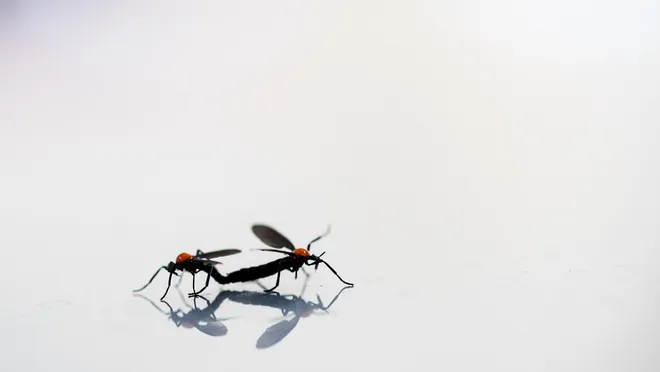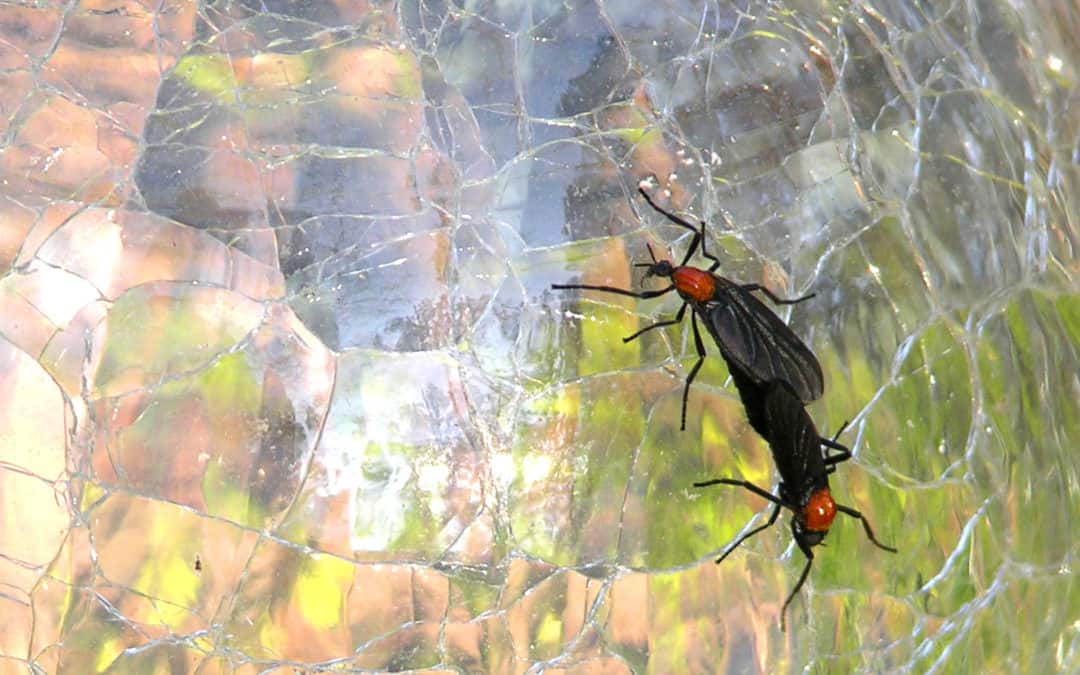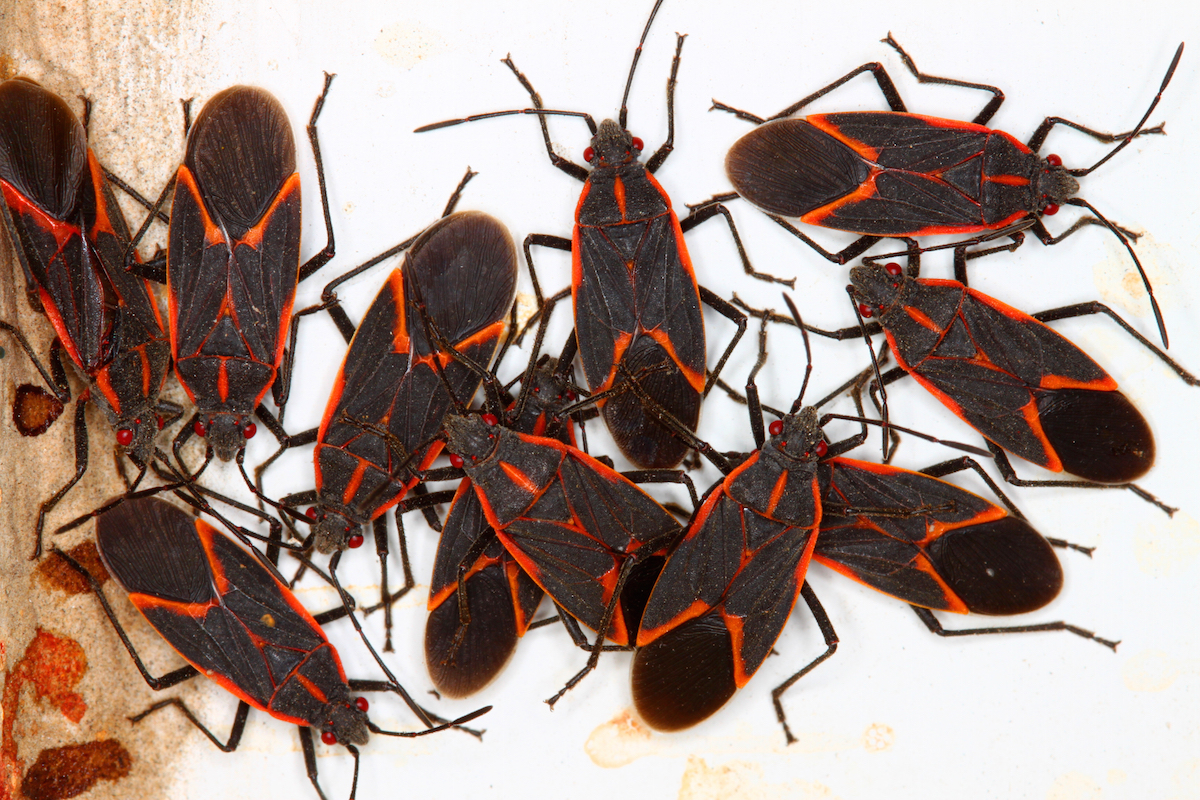READY TO GET STARTED?
REQUEST A FREE ESTIMATE
Fill out the form below or call (888) 466-7849 for a free, no-obligation estimate.

When Valentine’s Day rolls around, the presence of love is usually a good thing. But in Florida, there’s one kind of “love” you might wish to avoid—love bugs. These harmless but annoying pests thrive in Florida’s warm, humid weather, often causing widespread inconvenience for homeowners and drivers alike. If you’ve encountered love bugs and are searching for solutions without harming the environment, we’ve got you covered.
This blog will explore eco-friendly, non-toxic options to control love bugs while protecting your home—and the planet.
Before we jump into solutions, let’s quickly understand who we’re dealing with. Love bugs, scientifically known as Plecia nearctica, are small, black insects that are attracted to light and warmth. You’ll often find them in pairs (hence the name “love bugs”) during their mating season, which occurs twice a year—spring and late summer.
While they don’t sting or bite, these flying pests are notorious for swarming homes, getting stuck on vehicles, and even damaging car paint with their acidic secretions. Left unchecked, love bugs can turn into a nuisance that’s especially hard to ignore during their peak seasons in Florida.
Here’s how you can prevent and control love bugs without toxic chemicals, ensuring your Valentine’s Day—and every day after—is pest-free.
Prevention is the first step in green pest control. Love bugs are not strong fliers, which means they can easily enter your home through cracks, poorly sealed doors, and windows.
Love bugs are attracted to light—particularly white and yellow lights—making your porch or outdoor areas a prime target.
Say goodbye to harmful sprays, and hello to healthier alternatives.
Love bugs may be fond of light and heat, but they have plants they dislike too! Incorporating natural deterrents into your landscaping is an excellent way to prevent infestations while beautifying your garden.
If swarms have already invaded your outdoor space, you can use homemade traps to catch them effectively without resorting to toxic pesticides.
Fill a shallow dish with water and add a few drops of dish soap. Place it near a light source outdoors. Love bugs will flock to the light and become trapped in the soapy water.
For larger areas, consider hanging a sticky card or non-toxic adhesive trap.
Using eco-conscious pest control methods is more than just a practical choice—it reflects a commitment to sustainability, protecting the environment for future generations. Florida’s unique ecosystem is home to a wealth of wildlife, pollinators, and beneficial species that chemical pesticides can harm. Taking a green approach ensures that you’re targeting only the bugs you want to remove, leaving everything else undisturbed.
Sometimes, love bugs can be particularly persistent, especially during their mating season. If your DIY efforts aren’t enough, consider working with professional pest control companies that specialize in environmentally friendly solutions. Green pest control experts can assess your space, offer targeted interventions, and help maintain long-term pest-free environments—all while keeping harmful chemicals far away from your home.
It’s time to stop letting love bugs wreak havoc on your Florida home. With the green pest control strategies shared above and a local pest control expert near you, you can tackle these harmless but pesky invaders while keeping your commitment to environmental conservation intact. Whether you’re creating a citrus spray, rethinking your outdoor lighting, or sealing up your windows, every small step makes a big difference in keeping pests out and your home healthy.

The love bug (Plecia nearctica), also known as the honeymoon fly and the double-headed bug, is not actually a bug at all. It is actually a species of march fly and more closely related to biting midges and mosquitoes. These nuisance pests are found in parts of Central America and the Southeast United States, especially along the Gulf Coast.
Love bugs are small, about 1/4″ in length with black bodies and red heads. While it is very rare to see them in larval form, adult love bugs are very recognizable as they are almost always seen as a pair, with the male and female joined tail to tail. So why are the love bugs stuck together? The answer is simple. They are mating. Adult females will emerge and live 3 to 4 days, just long enough to mate before they die. Because of this, they must stick together at all time.
There are 2 major flights of love bugs during the year. The spring flight is usually from April to May and the summer flight is from August to September. Each flight lasts about 5 weeks.
While love bugs can be extremely annoying, especially if you are driving in the southern states, they are not capable of biting or stinging and pose no health threats to humans or other animals. They are also not known to transmit any diseases. They do cause other problems, however. Love bugs are attracted to the gas that is emitted from automobiles and will often congregate in large numbers near highways. This causes them to be killed in large numbers on car hoods, grills, and windshields. If left for too long, dead love bugs can cause damage to car paint, obstruct windshields, and even clog radiator passages and grills, causing mechanical issues and engines to overheat. These pests also thrive in humid environments so they can be found in basements, attics, and storage rooms, and even on flowers or in flower beds with high moisture content.
While your best bet is to just let them run their course, there are a few ways you can eliminate love bugs or deter them from your car or home.
While love bugs don’t pose any significant threat to humans, they can be a nuisance. If you have an issue with love bugs or any other pest, contact a professional pest control company for assistance.
Everything You Need to Know About “Murder Hornets”
How to Identify 5 of the Most Common Cockroaches in Georgia
Avoid Bites and Stings this Summer

You may have walked outside recently and come across a congregation of small black and red bugs either on your home or car. These are boxelder bugs or, as they are affectionately called in the south, “lovebugs”; one of the many overwintering pests we tend to encounter when the temperatures drop and take up residence on the south side of homes, vehicles, and rocks where the sun shines in abundance. The question is, should you be concerned?
Let’s break down what “overwintering” means and the process by how it affects bugs and your home. Overwintering is defined as the process of insects passing the winter seasons. In the warmer months, boxelder bugs reside and thrive in boxelder and silver maple trees. There they lay their eggs and feed on leaves and flowers.
Once temperatures start to drop, these bugs will migrate by the thousands out of the trees and take up residence on the south side of buildings and homes. Then, they either migrate to a nearby site to hibernate for winter OR make your home their hibernation spot for the winter season.
So, what’s the risk of a boxelder bug home invasion? While boxelder bugs are not known to bite, they may bite when threatened and puncture the skin, causing a slight irritation and leaving a mark, similar to a mosquito bite. They will also leave a reddish orange stain from their fecal matter that will add discoloration to fabrics when crushed.
If you’re having a boxelder bug problem, our Rome Northwest team is ready to help. A professional pest control plan has proven to be effective in controlling these overwintering pests when infested tress and the other areas around your home are treated with a residual pest control product. Schedule a free estimate to get started.